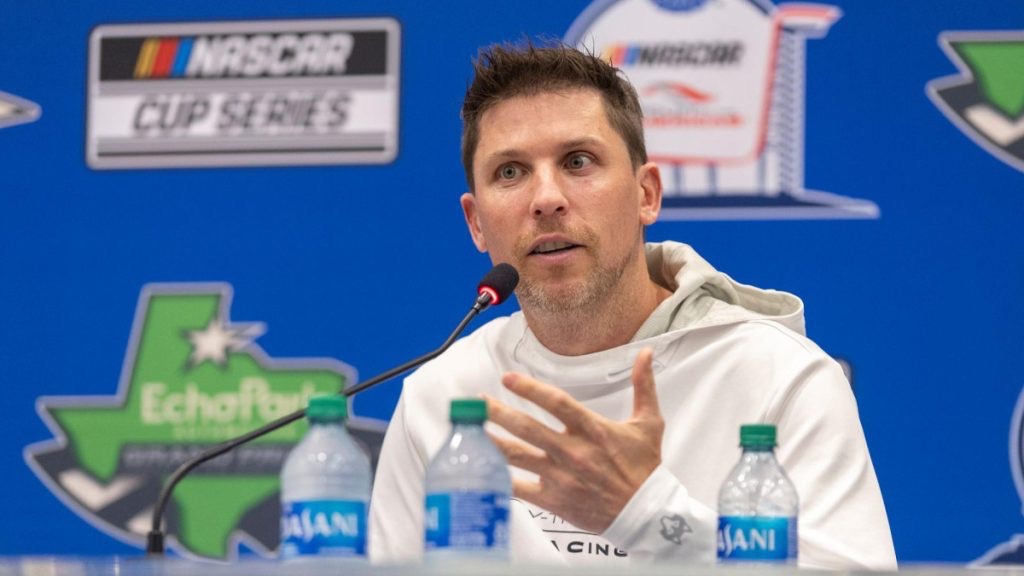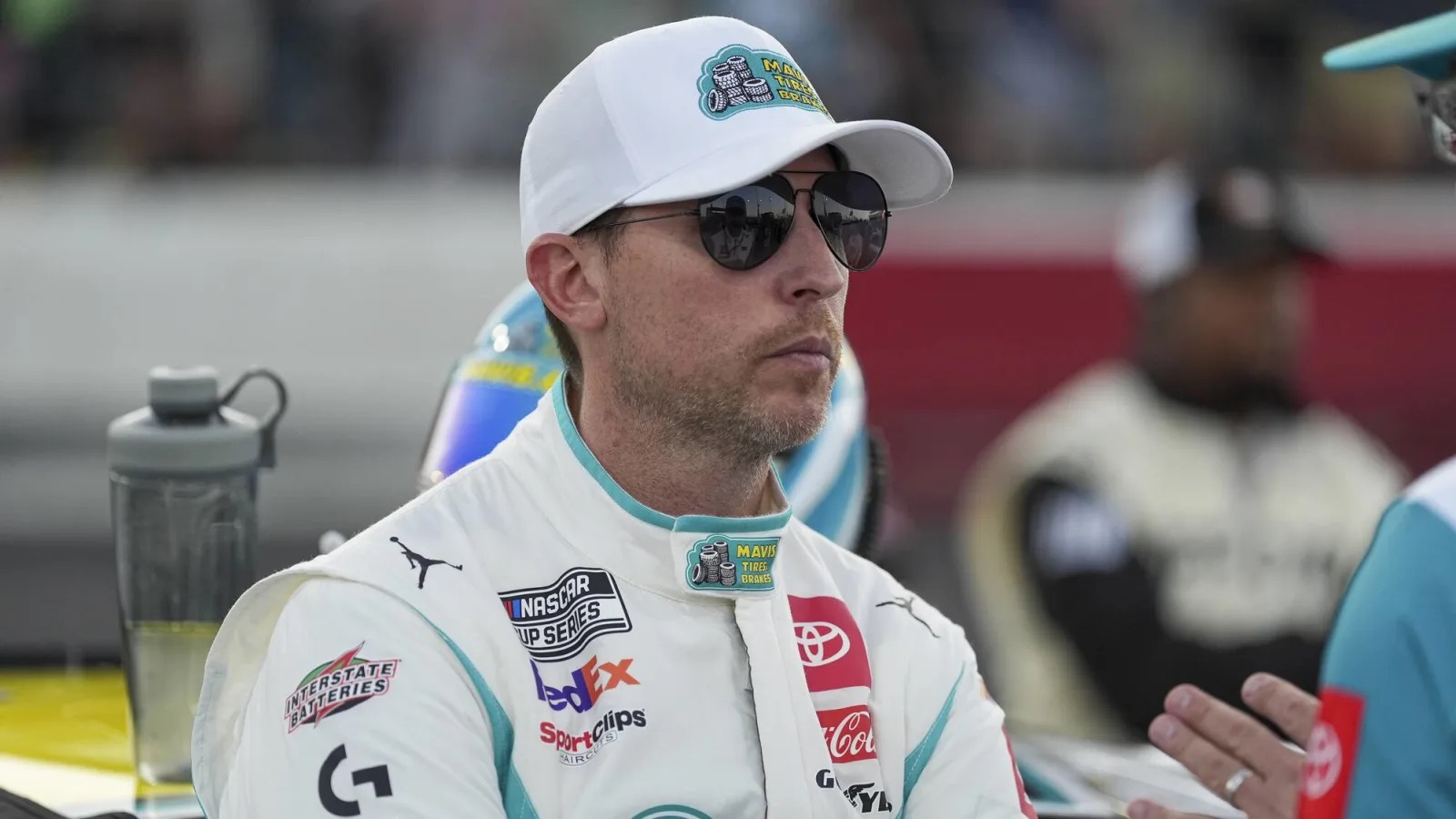
The most notable incident from the weekend at Pocono was Kyle Busch’s crash, caused by Corey LaJoie, who spun him out going into Turn 1 late in the race. This accident involved multiple drivers and ended Busch’s race prematurely.
Denny Hamlin reviewed the footage and shared his thoughts on the incident on the Actions Detrimental podcast. While he has his own opinion on the fault, he acknowledges there are arguments on both sides. Hamlin noted, “I’m not really sure… it was definitely a weird scenario for sure.”
Hamlin believes Corey LaJoie was overly aggressive but acknowledges LaJoie was also being pushed by another car, complicating the situation. “Corey was just entirely too aggressive… but he did get a shove from the 16 and likely couldn’t check up because the 8 car was right there,” Hamlin explained. The complications began when LaJoie tried to move to the left to avoid lifting and potentially getting turned around.
As LaJoie and Busch were both on the low side of the track, Busch attempted to block LaJoie, leading to their collision. Hamlin elaborated on the difficulty of navigating a Pocono restart from the back of the pack, stating that visibility is severely limited, making it hard to gauge the corner.
LaJoie’s increased speed put him quickly into Busch’s rear bumper, causing the crash. Hamlin questioned LaJoie’s awareness, comparing the incident to a past crash by Joey Logano at Indy. He emphasized the challenges of merging in a crowded field and the inevitability of a crash when attempting risky maneuvers.
Despite watching the incident multiple times, Hamlin was hesitant to label LaJoie’s actions as intentional. He concluded that it was a competitive race and a split-second decision that went wrong, saying, “I don’t think there was any intent to it, but it just kind of looked weird where why is Corey still accelerating when others were decelerating a little bit for the corner?”
Hamlin stressed the need for drivers to adjust their lift points when merging in crowded conditions to avoid such incidents, drawing a parallel to merging on a highway and the resulting stack-ups.

